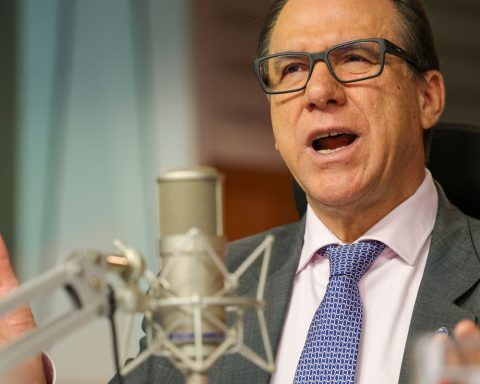Amid the impacts of the war in Ukraine on the global economy, the Central Bank (BC) continued to tighten its belts on monetary policy. Unanimously, the Monetary Policy Committee (Copom) raised the Selic rate, the economy’s basic interest rate, from 10.75% to 11.75% per year. The decision was expected by financial analysts.
In a statement, the BC said that the current moment requires caution. The Copom indicated that the next increase will also be of 1 percentage point, but that it may revise the pace of monetary tightening if necessary. “For the next meeting, the committee anticipates another adjustment of the same magnitude. The Copom emphasizes that the future steps of the monetary policy may be adjusted to ensure the convergence of inflation to its targets”, highlighted the text.
Although the rate was decided unanimously, the result was published about 40 minutes late. This was because the Copom ended shortly after 7 pm. Generally, meetings end in mid-afternoon, and the result is announced at 6:30 pm.
money squeeze
The rate is at the highest level since April 2017, when it was 12.25% per year. This was the ninth consecutive readjustment in the Selic rate. Despite the increase, the BC reduced the pace of monetary tightening. After three consecutive increases of 1.5 percentage points, the rate was raised by 1 point.
From March to June of last year, the Copom had raised the rate by 0.75 percentage point at each meeting. In early August, the BC started to increase the Selic rate by 1 point at each meeting.
With today’s decision (16), the Selic continues in a high cycle, after spending six years in being high. From July 2015 to October 2016, the rate remained at 14.25% per year. After that, the Copom again reduced the economy’s basic interest rates until the rate reached 6.5% per year in March 2018. The Selic was reduced again in August 2019 until reaching 2% per year in August 2020 , influenced by the economic contraction generated by the covid-19 pandemic. This was the lowest level of the historical series started in 1986.
Inflation
The Selic is the Central Bank’s main instrument to keep official inflation under control, as measured by the Broad National Consumer Price Index (IPCA). In February, the indicator closed at 10.54% in the 12-month period, the highest level for the month since 2015pressured by fuel and by the increases in education expenses at the beginning of the year.
The value is above the ceiling of the inflation target. For 2022, the National Monetary Council (CMN) set an inflation target of 3.5%, with a tolerance margin of 1.5 percentage points. The IPCA, therefore, cannot exceed 5% this year nor remain below 2%.
In the Inflation Report released at the end of December by the Central Bank, the monetary authority estimated that, in 2021, the IPCA will close 2022 by 4.7% in the base case. The projection, however, is outdated with the international tensions that raise the price of oil and with climatic factors that harm crops in several parts of Brazil. The new version of the report will be released later this month.
Market forecasts are more pessimistic. According to the bulletin focusweekly survey with financial institutions released by the BC, official inflation should close the year at 5.38%. The projection was raised after the recent increase in fuel prices.
most expensive credit
The increase in the Selic rate helps to control inflation. This is because higher interest rates make credit more expensive and discourage production and consumption. On the other hand, higher rates make it difficult for the economy to recover. In the last Inflation Report, the Central Bank projected 1% growth for the economy in 2022.
The market projects slightly higher growth. According to the latest edition of the Focus bulletin, economic analysts predict expansion of only 0.49% of Gross Domestic Product (GDP, sum of goods and services produced by the country) this year.
The basic interest rate is used in the negotiation of public securities in the Special System of Settlement and Custody (Selic) and serves as a reference for other interest rates in the economy. By readjusting it upwards, the Central Bank holds back the excess demand that puts pressure on prices, because higher interest rates make credit more expensive and encourage savings.
By reducing basic interest rates, the Copom makes credit cheaper and encourages production and consumption, but weakens control over inflation. To cut the Selic, the monetary authority needs to be sure that prices are under control and are not at risk of rising.
Article changed at 7:30 pm for additional information

















